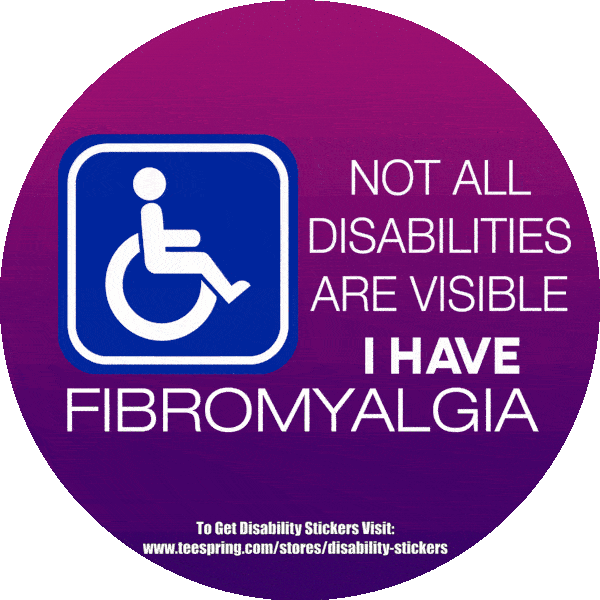Fibromyalgia: Coping with sensory overload
Does noise make you wince?? Your fibromyalgia pain may be related to a hypersensitivity to stimuli in your environment
What’s going on in your head?
This heightened sensitivity may be difficult for you to understand, much less explain to friends and family members who see no outward problem. The uncomfortable and painful sensations off fibromyalgia may be part of your brain’s unusual way of processing pain, suggests fibromyalgia researcher Benjamin Natelson, MD, a neurology professor at the Albert Einstein college of Medicine in New York City and author your symptoms are real: what to do when your doctor says Nothing is wrong.
According to the study published in the Archives of Physical Medicine and Rehabilitation that compared and analyzed reports from women with rheumatoid arthritis, women with fibromyalgia, and women without a pain syndrome, those with fibromyalgia were much more likely to report intense, unpleasant responses to sounds, smells, tastes, and tactile sensations.
Another study, published in the journal pain research and treatment, suggests that changes in brain chemistry among people with fibromyalgia may be linked to sensitivity to stimuli such as sound and smell. Imaging studies have provided visual depictions of this altered response to sensations. In some respects, the brains of people with fibromyalgia may be hyper-responsive to even the possibility of pain or discomfort, Dr Natelson says.
Researchers have also tested tissue samples and found elevated levels of inflammatory markers in the skin of people with fibromyalgia- which may be linked to hypersensitivity to touch. Touch sensitivity is real for people like Pringle, who say that there are times when even holding hands with her partner is too painful to bear. Clothes that are too tight, massages, and even light touches all ratchet up her pain and stress. To make matter worse, Pringle says she occasionally even flinches involuntarily when touched by others, which can be hurtful to those around her.
Sensitivity to environmental stimulation, including bright lights, loud noises, and even certain smells, can make living with fibromyalgia particularly challenging. You might wake up each morning wondering what new trigger may exacerbate your fibromyalgia symptoms.
“I deal with everything on a day-to-day basis,” says Stephanie Parker of Dover, Del, who believes her symptoms are consistent with fibromyalgia but has not yet been formally diagnosed. The symptoms keep her from participating in daily family activities, such as watching her kid’s ballgames in the afternoons.
Tina Pringle, who was diagnosed 16 years ago with fibromyalgia, says that her fibromyalgia symptoms have been overwhelming at times. “The symptoms all merge together and because of fatigue and brain fog, becomes a maze of sheer confusion,” explains Pringle.
The United Kingdom residents say her eye doctor identified her light sensitivity, to sound that’s most troubling. “Loud Bangs, a child crying, loud music, shouting, dogs barking and my worst annoyance, whistling, are all an issue,” she says. The noises resound in my head like a clanging cymbal and cause my whole body to tense up.
As her tension grows up, so does her fibromyalgia pain and she have to retreat to a darkened room to relax? Her reaction is particularly problematic at home, where her teenage often loves to play loud music and behave typically boisterous adolescent fashion.
Noise is just the beginning of the sensory anguish that might be contributing to your fibromyalgia pain. People living with fibromyalgia pain:
>>Increased sensitivity to certain flavors
>>Increased sensitivity to loud sounds
>>Increased to touch and pressure
>>Chronic pain and tenderness
>>Increased sensitivity to temperature changes
>>Increased sensitivity to unpleasant smells
What to do about fibromyalgia symptoms??
How can you address a problem that might stem from your brain’s wiring?? Here are some practical steps you can take to manage these sensory symptoms:
Work with a supportive doctor
“If your doctor doesn’t believe you have fibromyalgia, get a new one,” stresses Natelson. Pain treatment will be most effective, he says, when you and your doctor are on the same team. Three prescription medications have been approved for treating fibromyalgia and could help you manage your fibromyalgia pain and reduce your hypersensitivity.
Be active
A review of exercise as part of fibromyalgia treatment, published in the journal rheumatology international, showed that aerobic exercise may offset pain and minimize tender point sensitivity. Natelson advises gentle physical conditioning. His prescription: “Walk for 30 minutes every other day at about 1.5 to 2 miles per hour.” This increases your pace to about 3.6 mph. This level of activity “seems to down regulate pain perception,” Natelson explains. Walking outside is ideal, but if you’re sensitive to temperature changes, light, smells, and other sensations, start a walking program inside your home or at the gym.
Avoid your triggers
As much as you can, control your environment so that you limit potential causes of discomforts:
>> Ventilate you home well to remove strong smells.
>> Consider earplugs or noise-cancelling headphones to minimize or eliminate loud sounds.
>> Wear loose-fitting clothes and dress in light layers that you can remove if the weight of your clothes starts to irritate your skin.
>> Create a retreat. On particularly difficult days, a comfortable, cool, darkened room might be a soothing place to relax and recharge.
For reference: Fibromyalgia: Coping With Sensory Overload By Madeline R. Vann, MPH Medically Reviewed by Niya Jones, MD, MPH from everydayhealth.
For support and Discussion join the group “Living with Fibromyalgia and Chronic Illness”
Subscribe to our website for Email notification of our new Posts. Like and Follow us on Facebook. Swipe Left to Read more on Fibromyalgia or Click Here …

